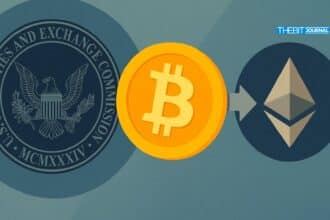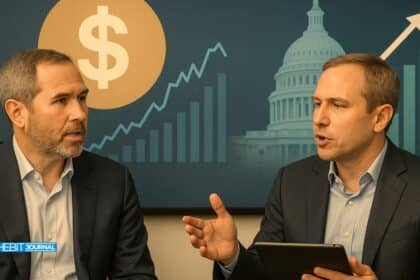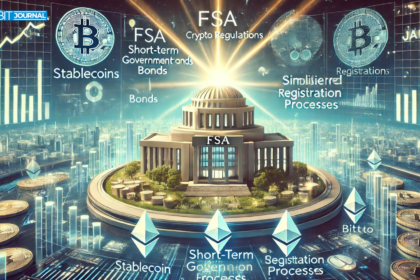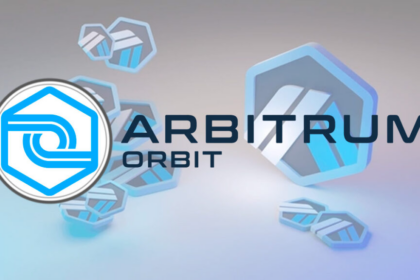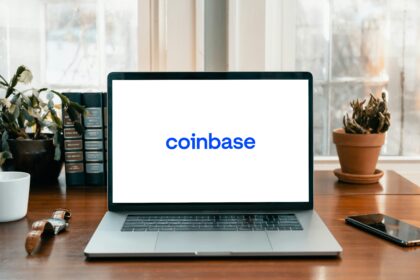Solana’s decentralized exchange (DEX) ecosystem has exploded in activity this month. A surge in token launches and retail trading has pushed Solana DEX volume to fresh highs. The majority of this growth is tied to memecoin demand and PumpSwap’s rapid rise.
SOL peaked at over $205 on July 21 before falling to $183. Despite the price dip, DEX trading stayed strong. PumpSwap now handles over 70% of Solana DEX volume, making it the leading exchange by daily flow.
The DEX boom has been fueled by fast-moving speculation. On July 21 alone, more than 241,000 trading pairs were created. Raydium LaunchLab hosted most of them, but PumpSwap led in actual trades. This highlights a new trend in Solana’s DeFi sector—launch anywhere, trade on PumpSwap.

PumpSwap Dominates Solana DEX Volume
PumpSwap is now the top venue for Solana DEX volume. On July 28, it processed $16.8 billion in trades. That’s 73.6% of all Solana DEX volume for the day. Raydium followed with $2.9 billion, and Orca came next with $1.5 billion.
PumpSwap’s appeal lies in its simple listing system. Anyone can list tokens quickly with few rules. It targets memecoin traders who value speed over vetting. This model attracts high-risk traders looking for fast gains.

Raydium Leads in Listings, Lags in Volume
Raydium still leads in token creation. On July 21, it launched 157,195 new pairs—65% of the day’s total. But only a small fraction of Solana DEX volume now flows through it. Just 12.6% of trades happened on Raydium by July 28.
This shows a clear split. Developers use Raydium to launch tokens. Traders prefer PumpSwap for execution. The shift reflects changing user behavior in the Solana ecosystem.
| Month | Min. Price | Avg. Price | Max. Price | Potential ROI |
|---|---|---|---|---|
| Aug 2025 | $ 180.77 | $ 185.38 | $ 189.33 | 4.22% |
| Sep 2025 | $ 189.25 | $ 200.14 | $ 209.95 | 15.57% |
| Oct 2025 | $ 205.56 | $ 210.44 | $ 213.63 | 17.59% |
| Nov 2025 | $ 210.68 | $ 212.05 | $ 213.24 | 17.38% |
| Dec 2025 | $ 204.03 | $ 207.04 | $ 210.33 | 15.78% |
SOL Price Falls, But DEX Volume Holds
SOL dropped nearly 11% in the last week of July. It fell from a high of $205.81 to $183.13. Yet Solana DEX volume remained strong. This indicates growing maturity in the market.
PumpSwap kept daily volume near $8.16 billion, even as SOL declined. Solana DEX volume stayed steady because of ongoing speculative trading. This activity now seems detached from SOL’s price swings.
High Turnover and Short-Term Liquidity
PumpSwap’s trading behavior shows high liquidity velocity. Its 1-day to 30-day volume ratio is 3.2%. Raydium’s is slightly higher at 3.5%. But in dollar terms, PumpSwap moves far more money each day.
This shows that traders are using PumpSwap for quick trades. They enter and exit positions rapidly, contributing to short-cycle liquidity. This has become the core of Solana DEX volume trends.
PumpSwap Gains Ground on All-Time Leaders
Raydium still holds the all-time lead in Solana DEX volume. Its lifetime volume has crossed $1.06 trillion. PumpSwap is far behind at $483.9 billion. But the gap is closing fast.
In the last 30 days, PumpSwap posted $251.41 billion in volume. Raydium saw only $34.96 billion in the same period. On July 28 alone, PumpSwap handled over $8 billion. That’s six times Raydium’s daily volume.

Orca and Meteora Serve Niche Roles
Orca and Meteora also play key roles in Solana’s DEX market. Orca moved $5.11 billion last week. Its 30-day volume hit $18.35 billion. Meteora processed $3.43 billion in a week and $26.47 billion for the month.
Both platforms have lower daily volumes. But their flows are steadier. This suggests they serve more stable users, like arbitrage traders and liquidity providers. They aren’t chasing short-term memecoin spikes.
Speculative Demand Drives Ecosystem Growth
The connection between token listings and SOL’s price remains clear. SOL hit its July high the same week new token creation peaked. As the pace of listings dropped, so did the price.
Solana DEX volume, however, stayed high. This shows strong speculative demand still exists. Even with fewer launches, traders remain active. Memecoins and microcaps continue to power the market.
Conclusion
Solana DEX volume is evolving fast. PumpSwap now drives most trading activity. Raydium remains dominant in token launches but not in execution. SOL’s price decline has not slowed the ecosystem.
Instead, high-frequency memecoin trading is fueling new levels of activity. Solana’s DEX space is shifting toward short-term, high-risk, high-volume trades—and shows no signs of slowing down.
Also read Solana Breaks $180: Will the $220 Rally Begin Now?
Summary
Solana’s DEX ecosystem surged in July, driven by a memecoin frenzy and PumpSwap’s dominance in trading volume. While Raydium led in new token listings, most actual trading shifted to PumpSwap, which now handles over 70% of Solana DEX volume.
Despite an 11% drop in SOL price, trading activity remained high, highlighting a shift toward fast-paced, speculative markets. Platforms like Orca and Meteora held steady with niche roles, while PumpSwap emerged as the core engine behind Solana’s high-frequency DEX trading boom.
Frequently Asked Questions (FAQ)
1- What is driving Solana DEX volume growth?
The surge in Solana DEX volume is primarily driven by memecoin trading on PumpSwap, which benefits from fast listing processes and minimal restrictions.
2- How much Solana DEX volume does PumpSwap control?
As of July 28, PumpSwap handles 73.6% of all Solana DEX volume, processing over $16.8 billion in a single day.
3- Is Raydium still relevant in Solana’s DEX landscape?
Yes, Raydium remains the top platform for token launches and holds the all-time highest Solana DEX volume, but it’s losing market share in day-to-day trading.
4- Does SOL’s price affect Solana DEX volume?
Not directly. While peaks in token creation often align with SOL price spikes, the trading volume has remained high even during price corrections.
Appendix: Glossary of Key Terms
Solana DEX Volume: The total value of trades executed on decentralized exchanges operating within the Solana blockchain.
PumpSwap: A Solana-based DEX known for its memecoin-focused listings and high-volume speculative trading.
Raydium LaunchLab: A token launch platform on Solana that facilitates the creation of new trading pairs.
Meme coin: A cryptocurrency created primarily for viral appeal, often with minimal intrinsic value or utility.
Liquidity Velocity: The rate at which assets are bought and sold within a market over a set time.
Token Listings: The process of making a cryptocurrency available for trading on a DEX.
Short-Cycle Trading: A strategy involving rapid buying and selling within short time frames for quick gains.
References
CryptoSlate – cryptoslate.com
Dune – dune.com


